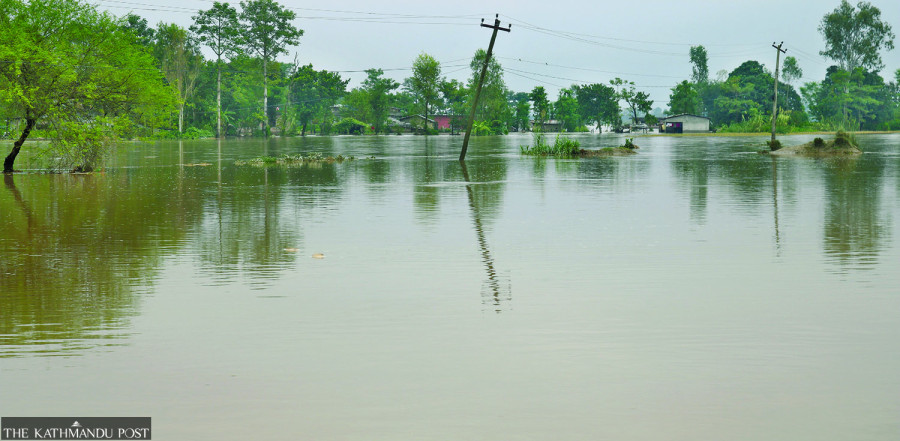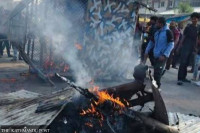National
Death toll from post-monsoon disaster reaches 101
Sudden and extreme rainfall in the third week of October has left experts worried about the impact of climate change on economy and livelihoods.
Shuvam Dhungana
Death toll from landslides and floods triggered by days of unseasonal rains in various parts of the country has reached at least 101 while 41 people are still unaccounted for, authorities said on Thursday.
Of the total dead, 60 are in Province 1 and 31 in Sudurpaschim Province, according to the data compiled by Nepal Police. Similarly, a total of 40 people were injured, including 19 in Province 1, four in Karnali and 17 in Sudurpaschim Province.
Of the 41 missing, 23 are from Sudurpaschim Province and 13 are from Province 1.
Search for the missing was still continuing until late Thursday afternoon, anpolice said.
Similarly, 2,232 houses were inundated due to the floods in various places.
A rare post-monsoon October rainfall, which started earlier this week from western Nepal, also caused massive property damage and displaced hundreds of families across the country.
Police data show as many as 1,177 families were displaced due to landslides and floods.
“Nepal Police is coordinating with various agencies and local governments to move the displaced families and those living in flood and landslide prone areas to safety,” said Senior Superintendent of Police Basanta Bahadur Kunwar, spokesperson for Nepal Police. “Nepal Police personnel are also working to remove roadblocks to resume the movement of goods and passengers in different parts of the country.”
The sudden and extreme rainfall in the third week of October, about a month after the monsoon usually ends in Nepal, has left experts wondering–and worried–how climate change is impacting the economy and livelihoods.
Not only casualties, due to the extreme and unexpected autumn rain in October this year, thousands of farmers across the country have lost their paddy crops.
Floods and landslides cause massive loss of lives and properties every year, but the country’s disaster preparedness has not been up to the mark. On top of that, the continuous exploitation of natural resources—the hills and mountains and trees—in the name of development has made Nepal more prone to monsoon disasters.
In the past few years, the country has been receiving more rainfall in a short duration of time–an abnormal phenomenon that is slowly becoming a new normal.
In August, the Intergovernmental Panel on Climate Change—the world’s leading authority on climate science—released a new report, spelling out a harsher future for humanity. The report talks about climate change impacts in South Asia, projecting extreme precipitation and river floods across the region.
This year the country received rainfall above the average, which triggered massive flooding and landslides across the country.
In June, floodwaters from the Melamchi river gushed into the settlements and main market, displacing over 100 families and leaving behind destruction worth millions of rupees.




 6.12°C Kathmandu
6.12°C Kathmandu










%20(1).jpg&w=300&height=200)



